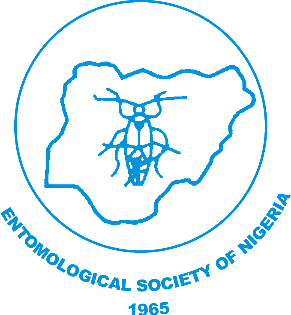
Survey of Man-biting Mosquitoes in Chukwuemeka Odumegwu Ojukwu University Teaching Hospital Awka, South-Eastern Anambra, Nigeria
NJE Vol. 40: 66-79, 2024
DOI.10.36108/NJE/4202/04.0150
Ikeh R. E.,1* Idigo, M.A. 2 Okoye, C.M,1 Nwakuche A.O,1 Anyanebechi W.C.1 and Ikpeoha., B.C 1
1Department of Parasitology and Entomology, Nnamdi Azikiwe University Awka Anambra State Nigeria
2Department of Biological Science, Chukwuemeka Odumegwu Ojukwu University, Anambra State, Nigeria
Abstract
Mosquitoes are responsible for transmission of several harmful diseases. Their identification is therefore crucial for effective vector control strategies. This study was carried out between March and May, 2023 at Chukwuemeka Odumegwu Ojukwu University Teaching Hospital, Awka-South L.G.A., Anambra State, to determine mosquito species biting on the hospital premises. The human Landing Catch and CDC light traps were used for adult mosquito collection. A structured questionnaire was distributed to the patients to obtain information on mosquito bites in the hospital. Data were analyzed using Pearson Chi-square test. The findings revealed a diverse array of manbiting mosquito species including Aedes aegypti, Ae. albopictus, Anopheles gambiae, Culex quinquefasciatus and Cx. tigripes. In total, 17 adult mosquitoes were collected outdoors using the Human Landing Catch method of which 52.94% were Culex quinquefasciatus, 41.18% were Aedes aegypti and least dominant was Aedes albopictus with 5.88%. One hundred and sixteen adult mosquitoes were collected indoors using Human Landing Catch method and these include Cx. quinquefasciatus (87.8%), An. gambiae (9.4%), Cx. tigripes (2.2%) and Ae. albopictus (0.7%) while 23 mosquitoes comprising Cx. quinquefasciatus 18(78.29%), An. gambiae 2(8.69%) and Ae. albopictus 1(4.35%) were collected using CDC light trap. Questionnaire results revealed complaints of severe mosquito bites on the hospital premises. The result of this study showed that Cx. quinquefasciatus was the most abundant man-biting mosquito in the study area. Control measures should be taken to reduce mosquito bites in the hospital through public awareness and adequate vector control measures.
Keywords: Mosquito, Man-biting, Chukwuemeka Odumegwu Ojukwu, Teaching Hospital
